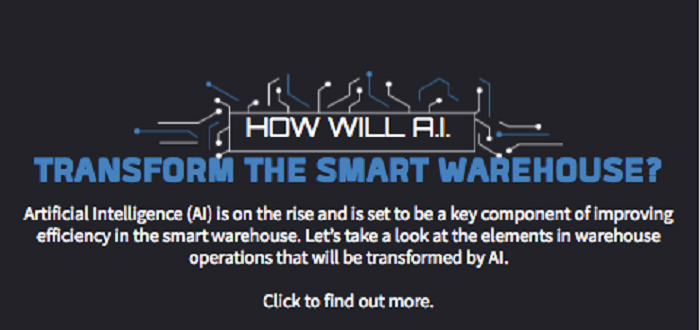-
ROSSLARE EUROPORT TARGETS HEALTH & SAFETY WITH CAMERA TELEMATICS PARTNERSHIP - 2 days ago
-
Landmark Study Reveals Wearable Robotics Significantly Boost Safety and Efficiency in Industrial Environments - July 24, 2024
-
Visku Tackle The Retail Seasonality Challenge One Pallet At A Time - July 22, 2024
-
KAMMAC AND BERGEN LOGISTICS STRENGTHEN FASHION & LIFESTYLE SERVICES IN THE UK - July 19, 2024
-
TENTBOX EXTENDS PARTNERSHIP WITH ARROWXL TO SUPPORT INCREASING DEMAND - July 17, 2024
-
The Perfume Shop improves customer journeys while driving profitability in partnership with Scurri - July 17, 2024
-
ZEROMISSION SECURES £2.3M ($3M) INVESTMENT TO ACCELERATE ELECTRIC FLEETS - July 16, 2024
-
BCMPA CELEBRATES SUCCESS OF 2024 CONFERENCE - July 15, 2024
-
Best of the Best: Jungheinrich Celebrates Triple International Award Win - July 12, 2024
-
GOPLASTICPALLETS.COM CALLS ON NEW CHANCELLOR RACHEL REEVES TO CONSIDER PLASTIC PACKAGING TAX REFORM - July 10, 2024
How will AI transform the smart warehouse?
Tim Young, Vero Solutions
Artificial Intelligence (AI) used to be an idea depicted only in Sci-Fi films. It was a future technology that had been predicted by groups of professionals, and AI and deep learning systems were thought to be unfathomable. But, as the technological revolution began, and developing at a swift rate, more sectors are witnessing an introduction of these innovative technologies.
From as soon as 2020, AI could be completely transforming warehouse operations. These technologies are set to be a key component in the improvement of efficiency, profits and targets, and AI will revolutionise everything that we know about the industries of today.
So, which divisions of warehousing and logistics can expect to see an impact with the influx of AI?
1. Productivity
In order to perform above and beyond quotas, businesses need to ensure that the productivity of their workforce is a vital aspect of their business strategy. AI has the ability to improve productivity in pick-and-pack warehouses with proven results.
2. Communication
Communication between workers is vital to the smooth running of day-to-day tasks. In order to achieve targets and ensure tasks are fulfilled successfully, workers and line-managers need to have the ability to communicate with ease in a time efficient manner. With the use of AI, such as robots used by online supermarket Ocado that can converse back-and-forth at a mesmerising 10 times a second, human inaccuracies are eliminated and profits have the potential to grow.
3. Warehouse Operations
Multiple operations in the warehousing and logistics industry are expected to become fully automated by 2030. 30% of UK warehousing jobs will become automated as AI becomes more integral. The operations with the highest risk of automation are: predictable physical activities (81%), processing data (69%) and collecting data (64%).
4. Wages
It’s not just warehouse operations and running costs that could save money with the support of intelligent AI systems; money that would usually be spent on employee wages has the potential to be saved too.
5. Robots
Can you imagine a warehouse where staff could operate on a just five minutes of sleep an hour? No lunch breaks, and no shift patterns? With the use of AI in warehouses, this is exactly the case. Robots, such as Amazon’s Kiva robots, can pick up goods and distribute them to different stations with warehouse in mere minutes, and only need 5 minutes to charge every hour.
6. Inventory
Smart warehouses that use AI to their advantage will be able to spend money – that was previously spent on inventory expenses – on more productive business growth opportunities.
Although 30% of jobs have the potential to become automated, employees are not expected to be fully replaced by robots. Automation will be integrated into current operations to be used as an aid; something to work alongside workers and help with routine tasks.
You can view the interactive graphic in full here.

































